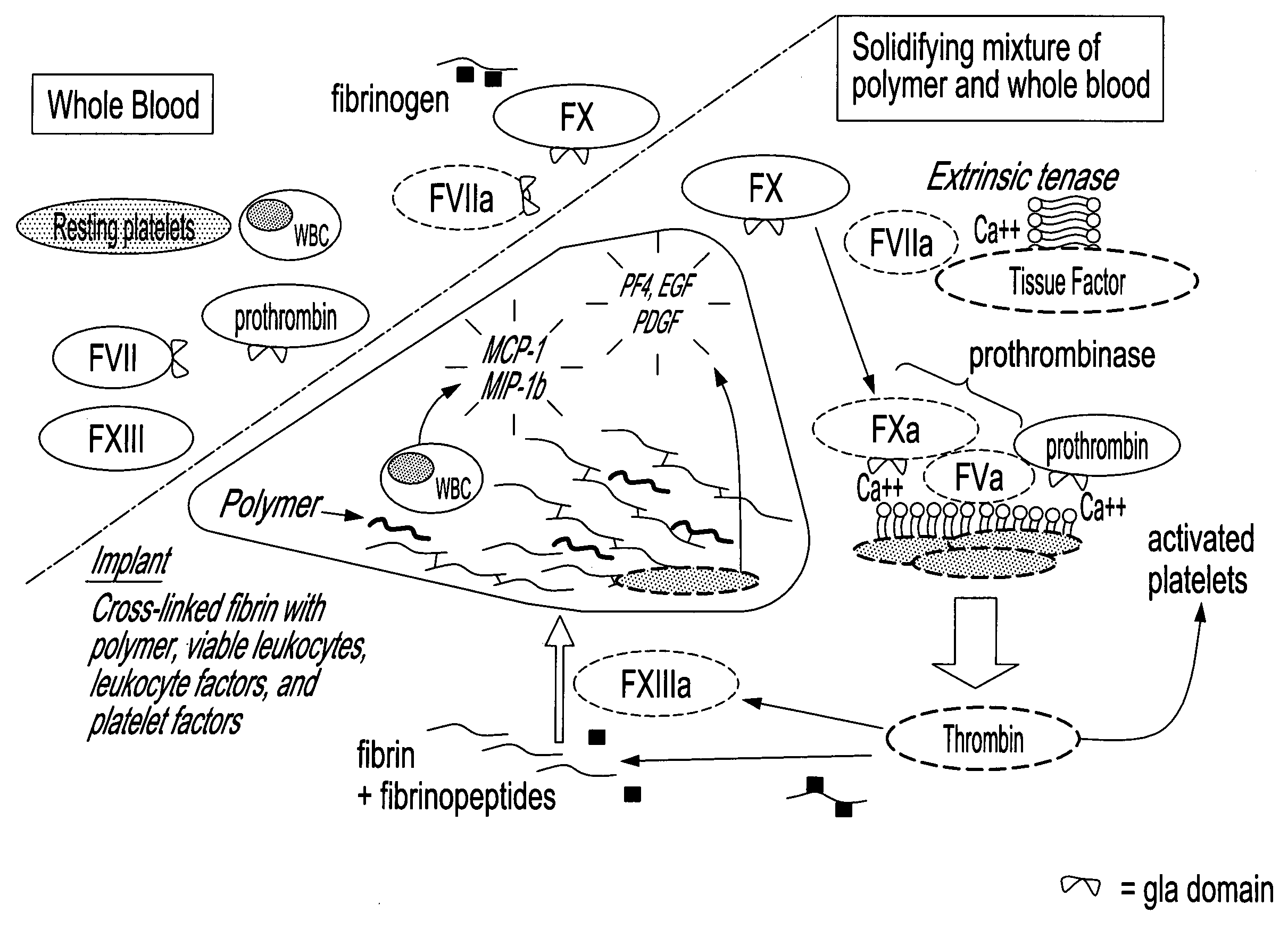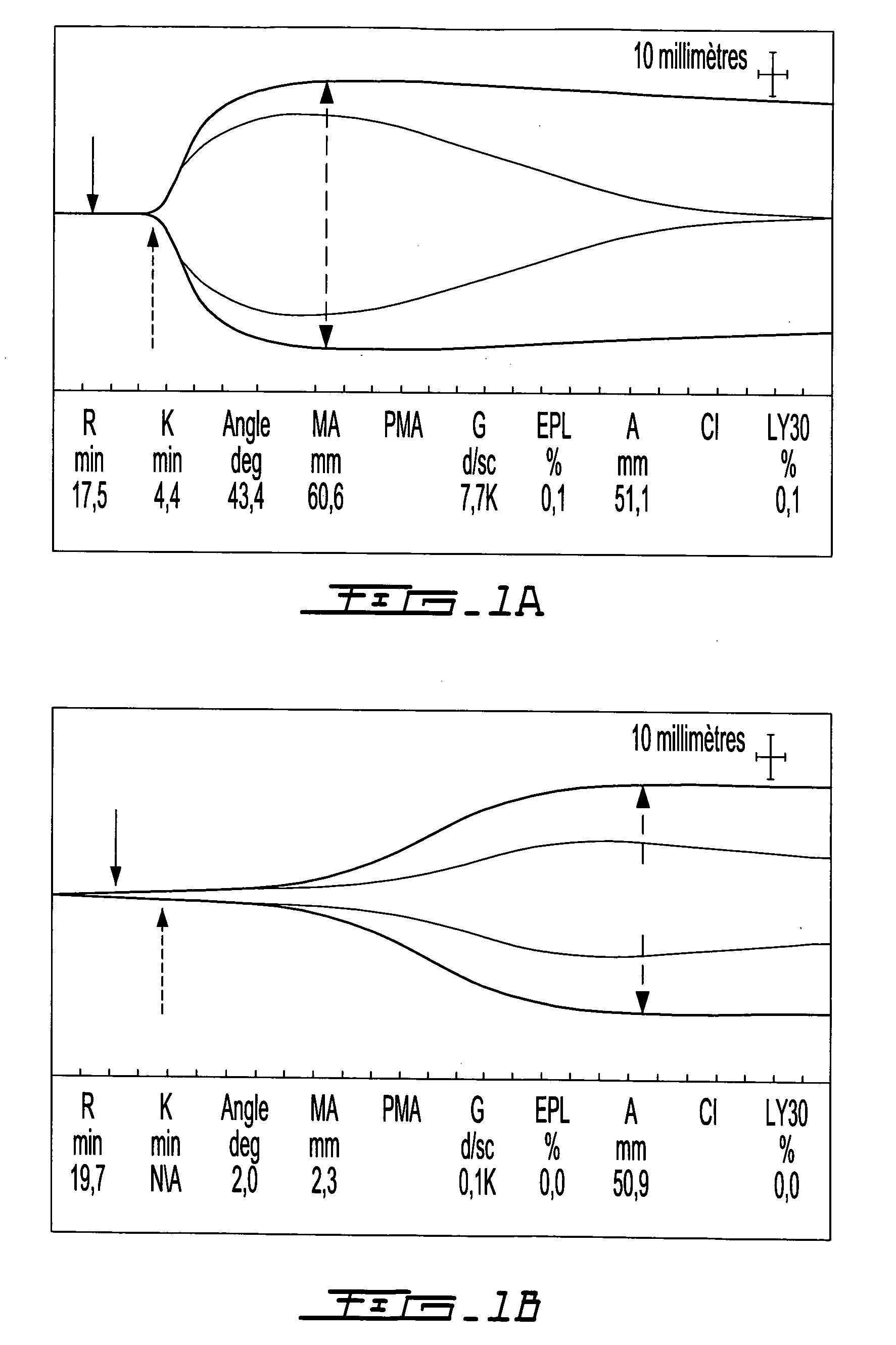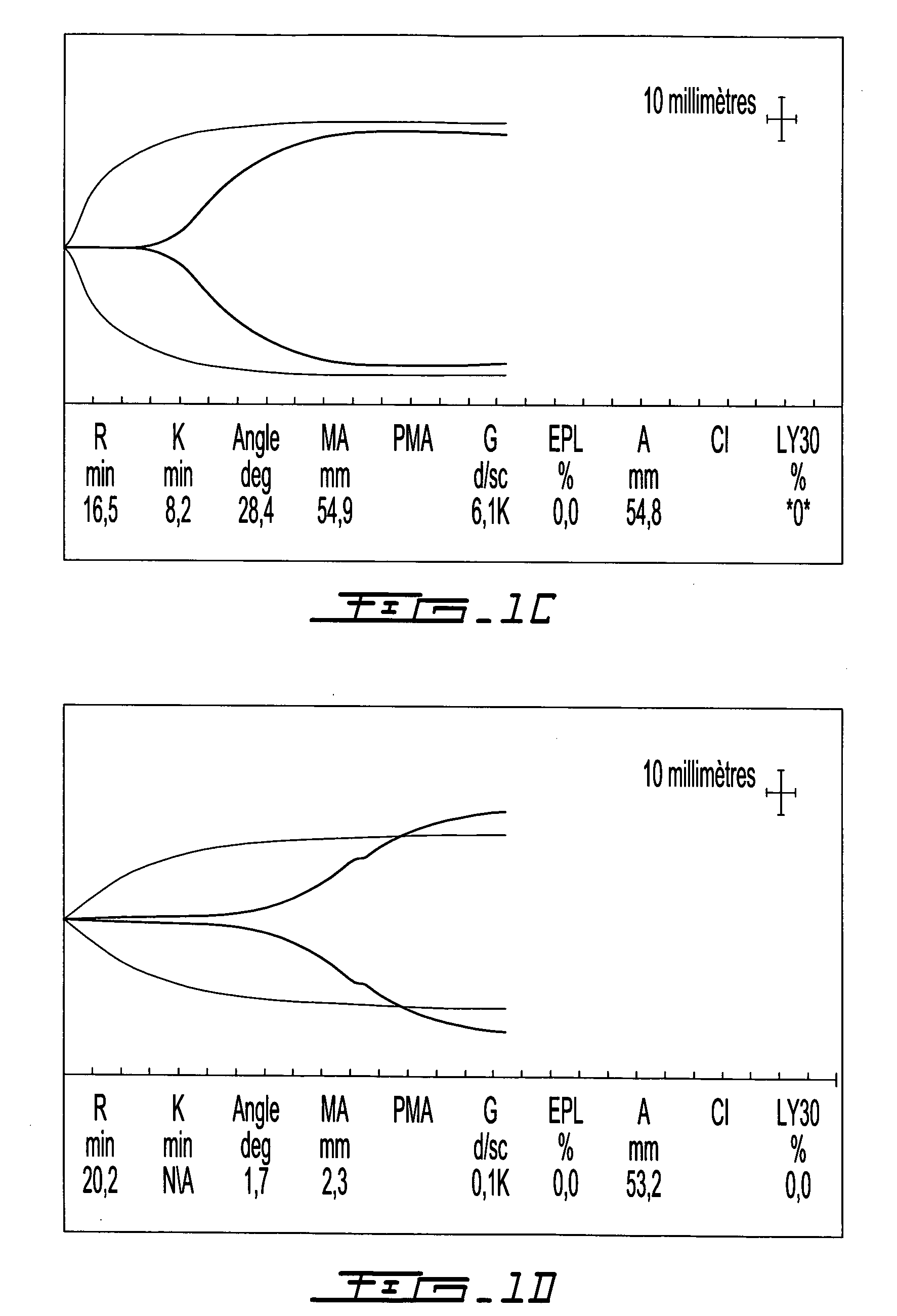Method for in situ solidification of blood-polymer compositions for regenerative medicine and cartilage repair applications
- Summary
- Abstract
- Description
- Claims
- Application Information
AI Technical Summary
Benefits of technology
Problems solved by technology
Method used
Image
Examples
example 1
Evaluation of the Clotting Time and Clot Tensile Strength for GP / Blood), GP / Blood and Tissue Plasminogen Activator, Chitosan-GP / Blood, Chitosan-GP / Blood and Tissue Plasminogen Activator, Chitosan-GP / Blood and rVIIa, Chitosan-GP / Blood, rVIIa and Tissue Factor
[0171]Solidification time and clot tensile strength can be evaluated using a thromboelastograph (TEG) (Bowbrick, V. A.; Mikhailidis, D. P.; and Stansby, G.: Value of thromboelastography in the assessment of platelet function. Clin Appl Thromb Hemost, 9:137-42, 2003), a type of blood rheometer. By TEG, unmodified human whole blood coagulates after a 7 to 20 minute time lapse. Samples were evaluated in a TEG set-up that allows simultaneous measurement of 8 samples, in order to evaluate the effect of clotting factors and fibrinolytic enzymes on coagulation of chitosan-GP / blood. Control samples consisted in whole blood or Glycerol Phosphate buffer (GP) without chitosan mixed with blood. Human whole blood (340 μL of freshly drawn huma...
example 2
Quantification of Levels of Thrombin Generation Via Serum Thrombin-Antithrombin (TAT) Complex Levels
[0192]Chitosan-GP / blood clots form via thrombin generation, platelet activation and Factor XIII activation. Antithrombin is in 3-fold molar excess over pro-thrombin in plasma, and binds with very high affinity to activated thrombin. Therefore, thrombin generation can be quantified via serum thrombin-antithrombin (TAT) complex levels (Rivard, G. E.; Brummel—Ziedins, K. E.; Mann, K. G.; Fan, L.; Hofer, A.; and Cohen, E.: Evaluation of the profile of thrombin generation during the process of whole blood clotting as assessed by thrombelastography. J Thromb Haemost, 3:2039-43, 2005). To measure thrombin generation in blood-polymer and blood-buffer mixtures, clotting assays were performed in plastic tubes which do not activate the contact pathway (Factor XII). Control samples were also generated in glass vials which activate the contact pathway.
[0193]To each plastic tube, 320 μL chitosan-GP...
example 3
Comparison of In Situ Solidification
[0204]These tests used rabbit whole blood. In individual mixing vials, clotting factors TF-phospholipids ±rVIIa or thrombin were homogenously mixed into the blood or the chitosan-GP solution prior to combining the blood and chitosan-GP solution. FIG. 7 describes the generation of polymer-blood mixtures using chitosan-GP alone (FIG. 7A); chitosan-GP mixed with TF-rVIIa then whole blood (FIG. 7B) and chitosan-GP mixed with IIa then whole blood (FIG. 7C). FIG. 8 describes the use, on either plastic vials (the three samples on the right side of FIG. 8A and the samples on the left side of the FIG. 8B) or on glass vials (the four samples on the left side of the FIG. 8A and the samples on the right side of FIG. 8B), of the following samples:
[0205]1. Chitosan-GP mixed with blood (solid implant, arrow)
[0206]2. Chitosan-GP mixed with TF-rVIIa then blood
[0207]3a. Chitosan-GP mixed with TF then blood
[0208]3b. Chitosan-GP mixed with TF then blood-rVIIa
Immediat...
PUM
| Property | Measurement | Unit |
|---|---|---|
| concentration | aaaaa | aaaaa |
| concentration | aaaaa | aaaaa |
| concentration | aaaaa | aaaaa |
Abstract
Description
Claims
Application Information
 Login to View More
Login to View More - R&D
- Intellectual Property
- Life Sciences
- Materials
- Tech Scout
- Unparalleled Data Quality
- Higher Quality Content
- 60% Fewer Hallucinations
Browse by: Latest US Patents, China's latest patents, Technical Efficacy Thesaurus, Application Domain, Technology Topic, Popular Technical Reports.
© 2025 PatSnap. All rights reserved.Legal|Privacy policy|Modern Slavery Act Transparency Statement|Sitemap|About US| Contact US: help@patsnap.com



